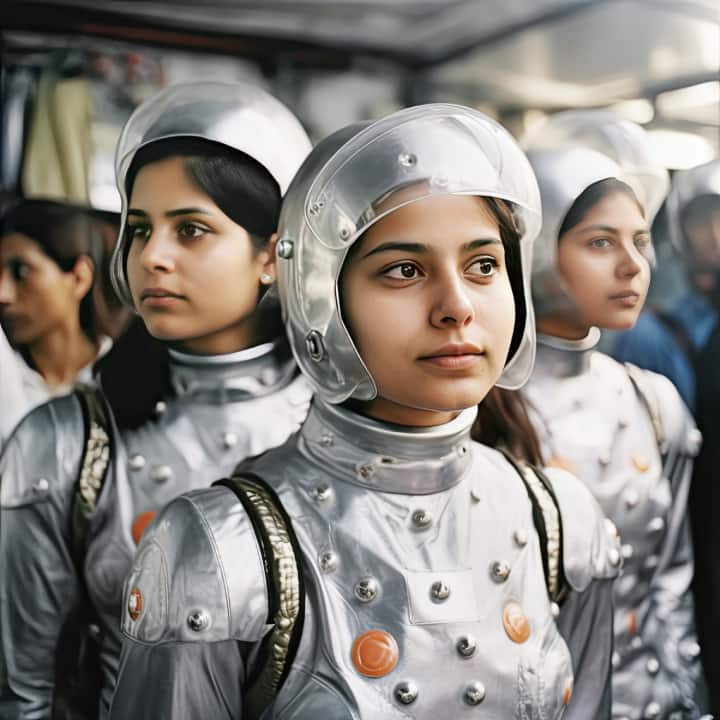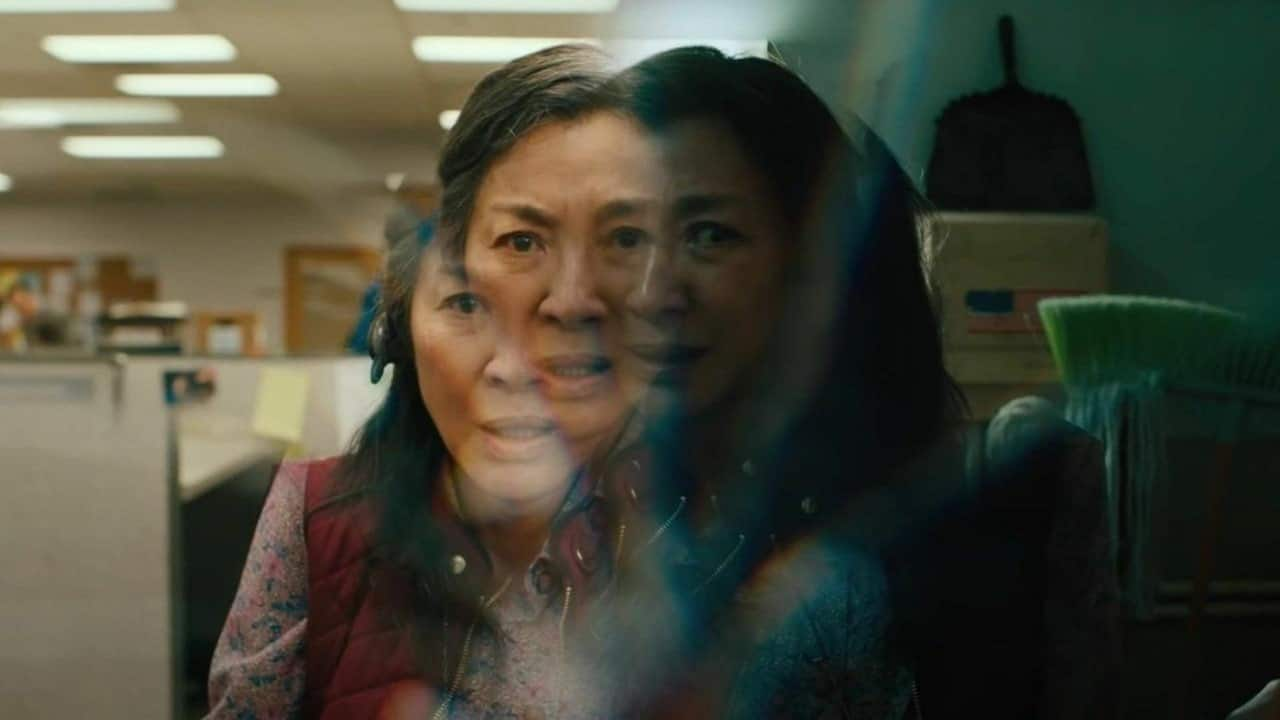



In November 2022, Prateek Arora, a creative professional working in the media space in Mumbai, decided to share a couple of his visual designs made with AI, with the world. He had been working with Midjourney, an AI engine that generated images in return for worded prompts. Arora had been testing his hands with this new tool for eight months, and though he wasn’t quite sure what he had in that moment, he decided to put his work out nonetheless. ‘Granth Gothica’, a surreal set of images that mixed beastly gothic traits with the modesty of the average Indian family album, became an instant internet sensation. These images looked eerie, discomforting and puzzlingly exotic. Arora’s work, and its incredible virality since, is more proof of the growing relevance of Artificial Intelligence in the realm of art, particularly as art itself; as a tool and a sociological deterrent. The conversation the artist believes has only just begun.
 Laakhon Mein Ek by Prateek Arora
Laakhon Mein Ek by Prateek AroraThere are two contrasting schools of thought at play. The more conservative view that a large part of the creative community still subscribes to, that AI is essentially a really slick imitation of the human imagination, a copying machine engineered to by-pass human fallibilities like tiredness, lethargy, memory and of course, mortality. The other view is rather post-modernist, in the sense that everyone will eventually apply their own idea of AI. “The whole point of my work is to be able to imagine India, in ways that you cannot. Or in ways that the west, at least, tells us we cannot. The intention is not to deceive, but to show a re-imagination of what this familiar world could also look like,” Arora says. ‘Indofuturism’ as he calls it, is inspired by a healthy long-drawn subscription of desi pop-culture, comic books and sci-fi fantasies that Arora grew up on. Genres of storytelling, he believes simply never took off the way in this country like they could and probably should have.
 Mumbai Tetris by Prateek Arora
Mumbai Tetris by Prateek AroraThe proliferation of AI, its speed, efficacy and minimal overage instantly, make it a likeable device to curb the costs of organisation and execution. But much like the emergence of still photography, there are mounting concerns over the ethical blind-spots of intent and motivation. If reality can be refined, it can also be tarnished, manipulated and torn at the seams. “I have to admit there are risks with issues like deep-fakes and propaganda being created on the go, but that has been the case with disruptive tech or tools that have emerged in the past couple of centuries. Should there be some sort of regulation for what is being created and how AI is being used? Absolutely,” Arora says. But as a filmmaking aspirant who landed in Mumbai about a decade ago, the artist believes he has only just found the liberalising instrument that might help create something he has always pined for – a flourishing, sci-fi culture built around whimsy and wonder.
Acceptance for AI-generated art won’t be as instantaneous as its speed of production. Arora says his work is still met with rigorous trolling and flippant criticism. In the well-documented strikes by actors and writers in Hollywood, AI has been regarded as a major threat to livelihoods and the creative process itself. “You can’t come at art from a protectionist point of view. The economic anxiety that comes with accepting AI, I agree, is a critical conversation. And it must be had. In terms of tech evolution and disruption, there will always be winners and losers,” Arora says.
But the kind of generational device that erases as much as it creates, poses endless dilemmas. Excitement around AI’s capabilities have, therefore, been arrested by anxieties regarding the erosion of what we believe is essential to all art – human consciousness.
 Rocketganj by Prateek Arora
Rocketganj by Prateek Arora“I think the conversation around AI has unfortunately become a binary of sorts. There is a misrepresentation of the technology in this argument. In fact, I feel artists working with legacy apparatuses could actually leverage this to become better. Many argue that my work displaces photography, but I’m merely producing something photography couldn’t,” Arora says. Rocketganj, Arora’s first-of-its-kind solo exhibition at Delhi's PhotoINK from November 4 - December 2, 2023, offered stark, unassailable evidence of the perverse, yet persuasive nature of the beast. It’s arresting, a tad dissociative for sceptics, but undeniably dazzling.
 Everything Everywhere All At Once had VFX sequences generated or assisted by AI.
Everything Everywhere All At Once had VFX sequences generated or assisted by AI.AI has already started to make inroads into the filmmaking process. Last year’s Oscar-sweeping Everything Everywhere All At Once had VFX sequences generated or assisted by AI. And while that gives birth to another dilemma about the distinction between art generated by AI and that which has been assisted by it, for now Arora believes making that distinction is important. “For now, I declare my work as being generated by AI. Is it art? It absolutely is. It’s not a mandate, though. AI is a medium, like comic books, or 15-second reels. And what it has done is to democratize the ability to create art or tell stories without necessarily having the means for it. I understand why legacy media and traditionalists might be perturbed by it, but it is precisely what makes AI so radical,” Arora adds.
According to Arora, filmmakers in the Hindi film industry aren’t as pessimistic as their western counterparts. The reason could be the country’s recent tryst with technological disruption as a tool for cultural and economic emancipation. Ironically, that trust and belief in tech hasn’t translated to imaginary utopias or worlds that the young and the restless can share as a matter of common folklore. AI tools and software, Arora claims, are finding their way to big-banner studios but there is still time before this vague, all-conquering dominion of ideas can adequately be applied. It first needs to be understood, critiqued and maybe in places, even conquered. AI’s ‘meme-level consciousness’, as the artist calls it, has already been established. With video generation, it might go places few instruments in the history of art, creation and distribution ever have. “I’m learning to control it better, to get more accurate output. The next step is to do it at a larger scale, make films that represent a new medium in themselves. Image was only the first step,” Arora says.
Discover the latest Business News, Sensex, and Nifty updates. Obtain Personal Finance insights, tax queries, and expert opinions on Moneycontrol or download the Moneycontrol App to stay updated!
Find the best of Al News in one place, specially curated for you every weekend.
Stay on top of the latest tech trends and biggest startup news.